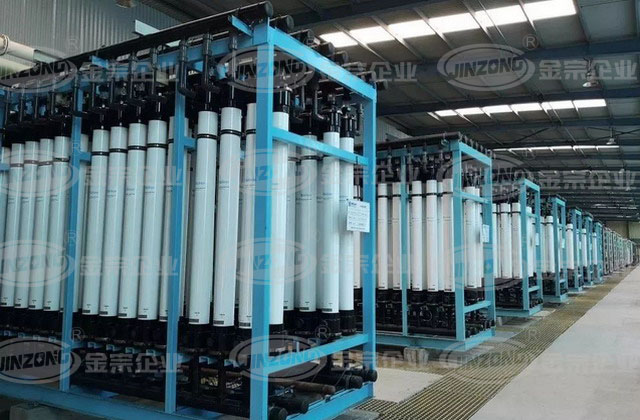Detailed analysis of the technical principle and structural composition of RO pure water equipment
Introduction:
Reverse osmosis pure water equipment is an efficient water treatment device widely used in various fields such as home drinking water purification, industrial pure water manufacturing, medical water preparation, and laboratory ultra pure water production. Its core technology is based on the principle of Reverse Osmosis (RO), which can effectively separate almost all soluble solids, organic matter, microorganisms, and most ions from raw water, thereby obtaining water with almost extremely high purity.
Jinzong Enterprise, with over 20 years of experience in water treatment equipment production design and development, will provide a detailed introduction to the technical principles and structural composition of reverse osmosis pure water equipment.

Working principle of reverse osmosis pure water equipment
The core of reverse osmosis pure water technology lies in the selective permeation characteristics of semi permeable membranes. In nature, water molecules will naturally permeate from low concentration areas to high concentration areas through semi permeable membranes under the influence of concentration differences. In the process of reverse osmosis, a pressure higher than the natural osmotic pressure is applied externally, causing water molecules to pass through the semi permeable membrane in the opposite direction of natural infiltration, flowing from the high concentration side to the low concentration side. Most solutes such as inorganic salts, heavy metal ions, organic matter, bacteria, viruses, etc. are blocked by the membrane due to size or charge, thus achieving deep water purification.
Structural composition of reverse osmosis pure water equipment
A typical reverse osmosis pure water equipment mainly includes the following key parts:
1. Raw water pretreatment system:
Raw water tank: stores untreated raw water.
Raw water pump: Provide sufficient pressure to drive water flow through the entire treatment system.
Mechanical filter: used to remove large particles such as suspended particles, sediment, and rust from water.
Activated carbon filter: adsorb residual chlorine, odors, some organic matter, and pigments from water.
Security filter: also known as precision filter, further filters out smaller particles to protect the subsequent reverse osmosis membrane from damage.
2. Reverse osmosis purification system:
Reverse osmosis membrane component: This is the core component of the equipment, usually composed of dozens to hundreds of reverse osmosis membrane components, each containing an efficient semi permeable membrane that allows only water molecules and a few small molecules to pass through.
Booster pump: provides the required pressure for the reverse osmosis process, ensuring that water molecules can overcome osmotic pressure and penetrate the membrane.
Membrane shell: used to fix and protect reverse osmosis membrane components, and provide a channel for water flow.
3. Control system:
Control system circuit: including sensors, controllers, and actuators, responsible for monitoring parameters such as water quality, pressure, flow rate, and automatically adjusting the equipment's operating status according to set values, achieving fully automatic control and remote monitoring functions.
4. Aftertreatment system:
In applications that require higher purity water, reverse osmosis pure water equipment may also include ultra purified post-treatment systems, such as ion exchange columns, UV disinfectors, terminal microfilters, etc., to further improve water purity and reduce total organic carbon (TOC) content.
Summary:
The reverse osmosis pure water equipment achieves high purification and reuse of water resources through scientific and reasonable structural design and advanced reverse osmosis technology. With its excellent desalination performance, high water recovery rate, and intelligent operation management, it has become an indispensable key technical equipment in the modern water treatment field. With the advancement of technology, the reverse osmosis pure water equipment is constantly optimized and upgraded, which not only improves work efficiency but also reduces operating costs, which is of great significance for solving water resource shortages and ensuring water quality safety.



